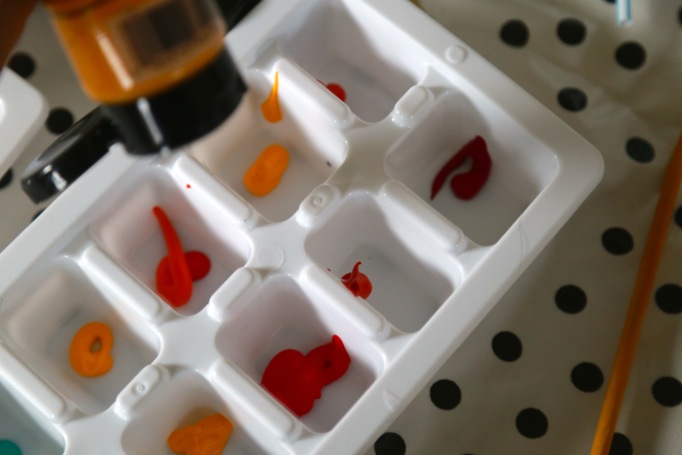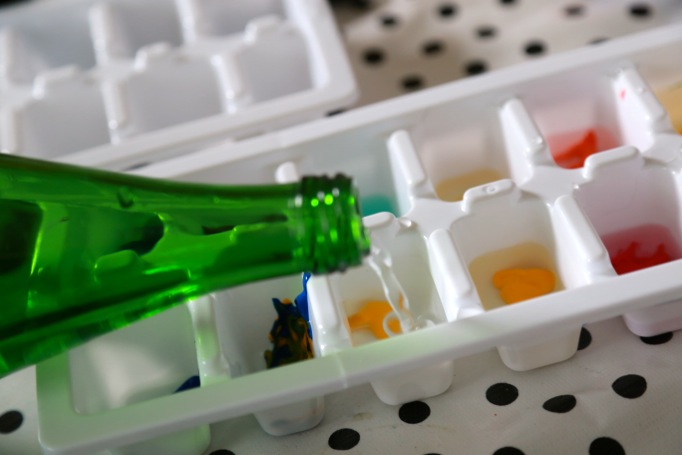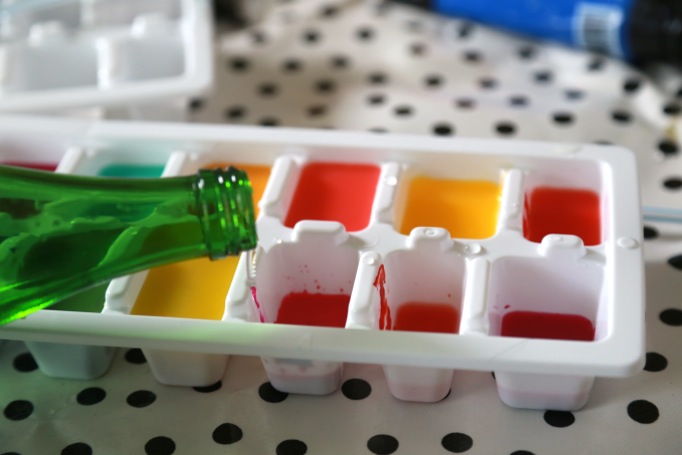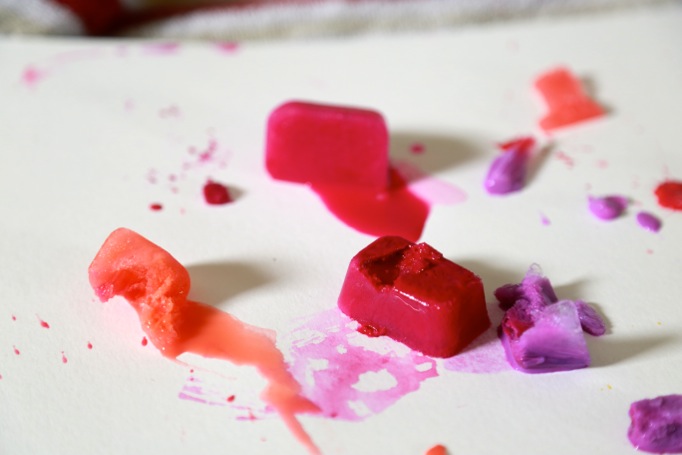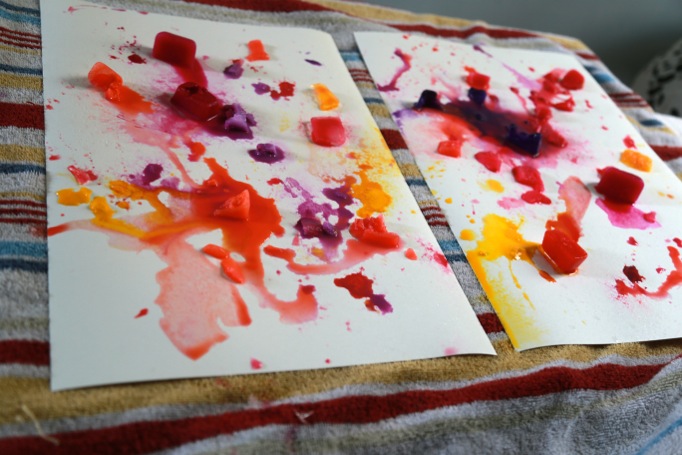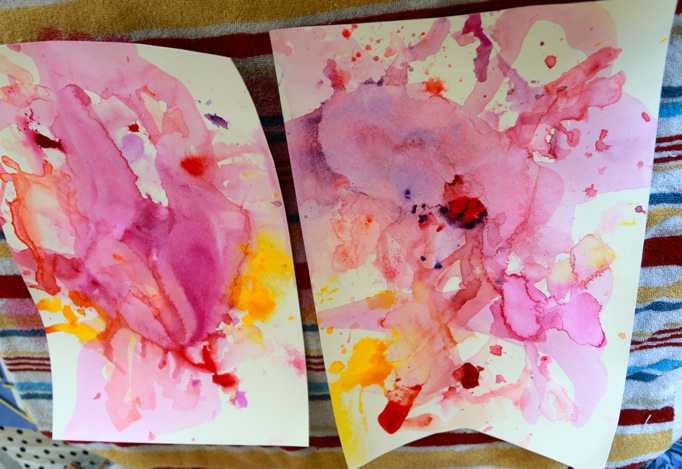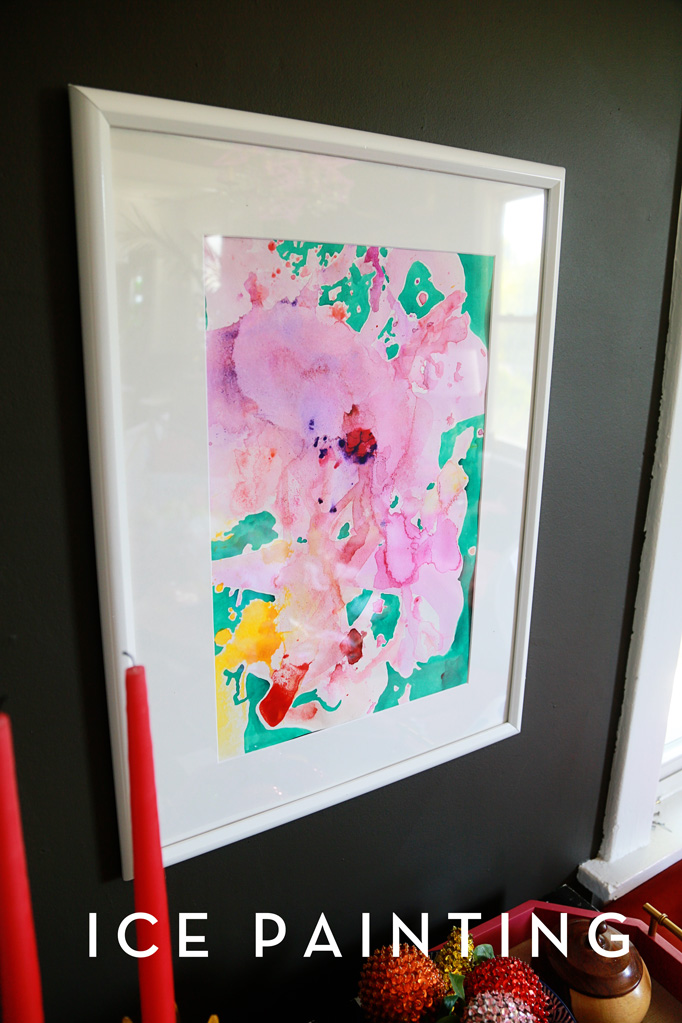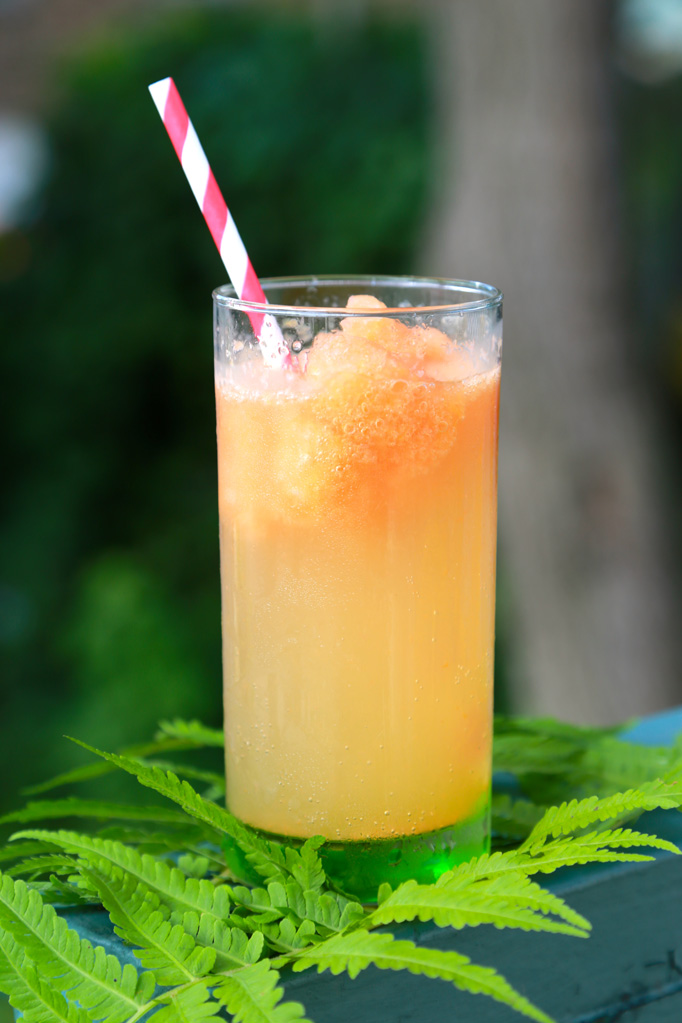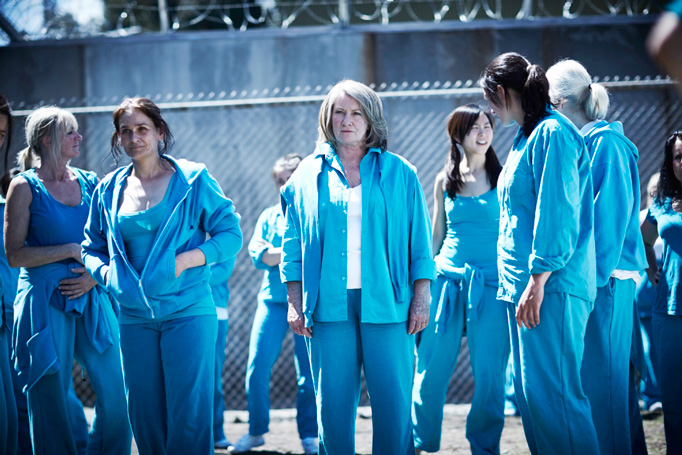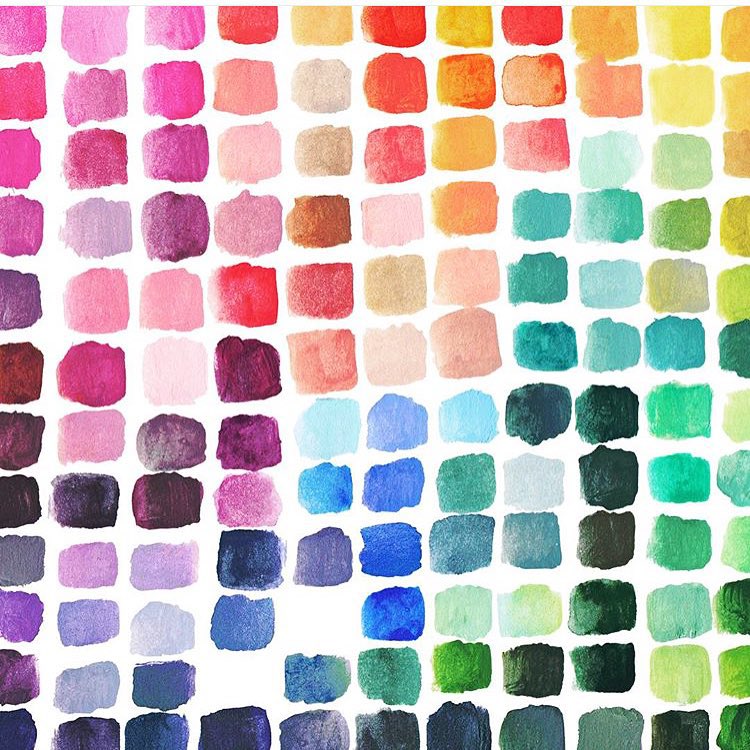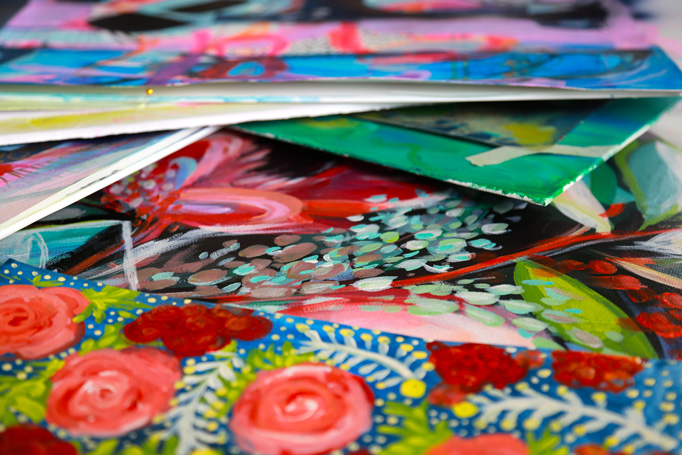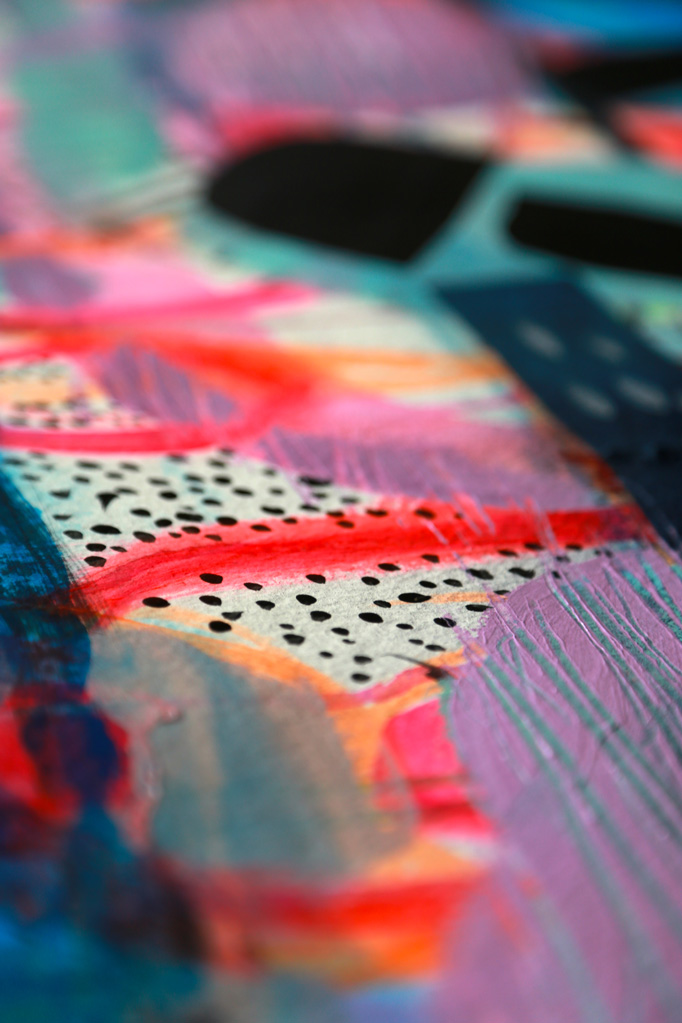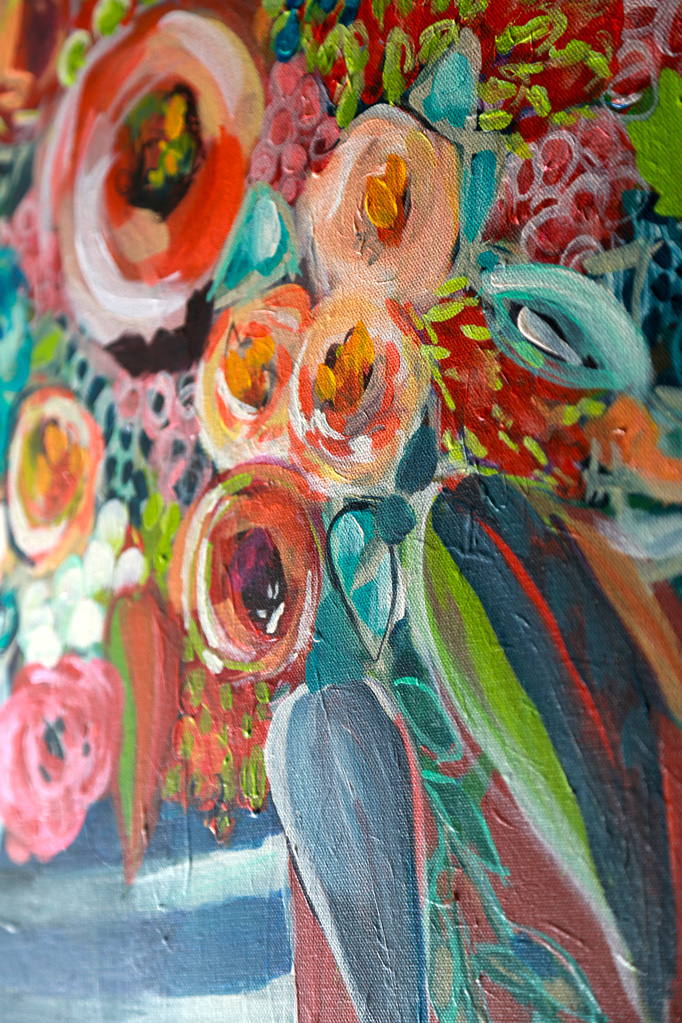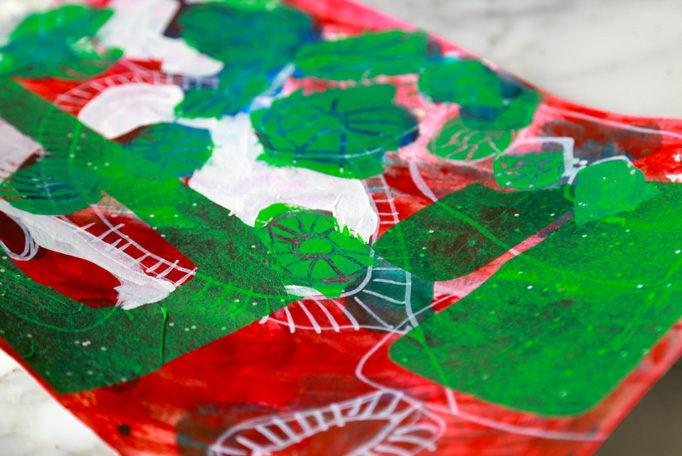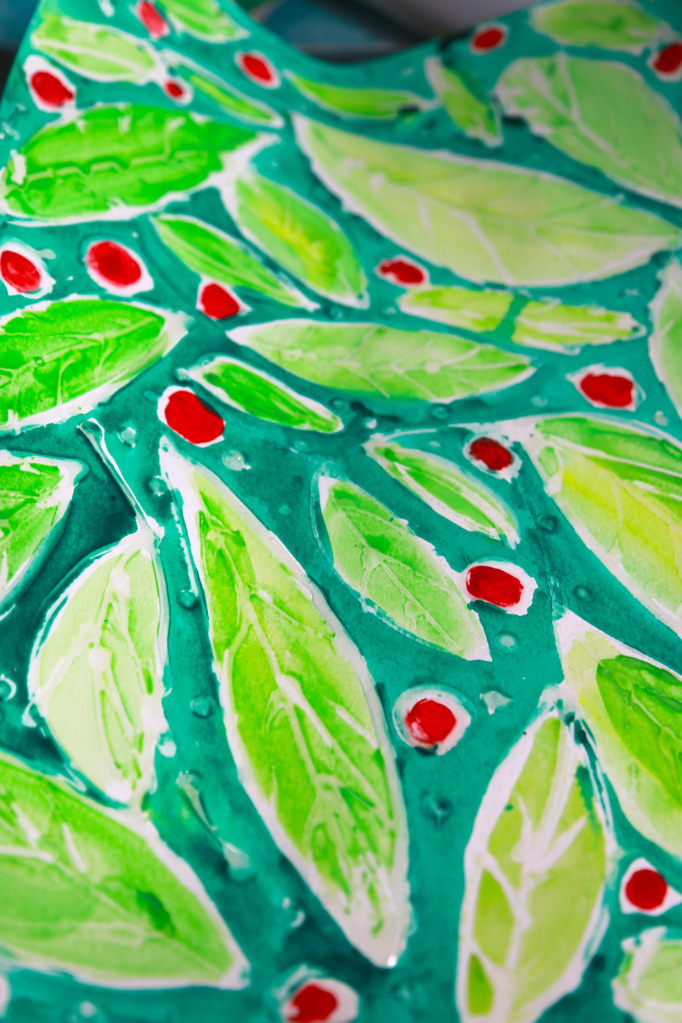As much as I have been grooving on painting flowers lately, there is something really satisfying about a totally random abstract. No meaning or purpose – just color, color, COLOR. Michael’s asked me to show a new way to use one of their favorite brands – Liquitex paints. Lucky for me, they are one of my favorites too! And since this is the height of summer, I thought this would be a great chance to cool off with an old favorite: ice painting.
I know what you are thinking; Ice painting? Paint ice? What the?
Yep. Ice painting.
Ice made from paint. You just leave it to melt on the paper and it’ll make these colored puddles like WHOA. I learned to do this in nursery school (shout out to Palisades Pre K!) where we made paint puddles then when they dried we drew faces and legs on top. It was precious. I don’t recall what I made, but I recall it was really messy and that meant I liked it. That’s pretty much the criteria for a good craft – messy meter reading of 8 or more. This won’t be that messy for adults, or, play it safe and keep it outside. Your call. It can be an easy or sophisticated as you like it.
Materials
Liquitex acrylic paint
Watercolor paper
Water
Ice cube tray (you could also use baggies or disposable trays (any sort of plastic ‘bubble’ packaging will work fine too))
Toothpick or plastic fork (for stirring)
Paintbrush
Old towel (or work outside on the grass)
Note on paint: Ice painting can be done with lots of different kinds of paint, but I have found that using a full bodied acrylic like Liquitex will give you the most interesting and saturated results. You’ll want a paint with a lot of pigment. It needs to be water soluble to lend itself to ice, but thick enough to that some of it will resist melting into the ice completely (you’ll see the difference when it melts). I’m very fond of Liquitex because that was what was recommended as the standard in art school, and although they carry several varieties, I like the big tubes you can get at Michaels. They last for years. Literally, I just finished off a tube of white Liquitex from 1999. It’s a workhorse!
So, let’s start. Add a small amount of paint in each compartment of the ice tray (somewhere between 1/2 a teaspoon and a full teaspoon). You can get 2 ice cube trays at any dollar store, or you can line an existing tray with tin foil or plastic wrap.
Add a small amount of water. Maybe a teaspoon. DO NOT FILL (YET). You need enough room for the next step.
Use a stick or spoon to mix the paint with the water. Plan on it splashing around. Don’t worry about it blending completely (in fact you will get more interesting end results if you leave a few paint chunks)…just get the party started.
Now go back and add enough water to fill each compartment. Remember, water expands when it freezes so leave a little room on top.
Put it in your freezer and let it solidify. Most ice will freeze up in a a couple of hours, but I just let it set all night.
Now for the fun! When the ice is solid, plop it out onto a piece of watercolor paper. I like to crush a few of the cubes and let them run around the paper a little. You can actually paint like this, using the cube as a sort of brush, but I like the results that come from letting the ice do its thing.
Note, you really need an absorbent paper like watercolor paper for this. You could also use white fabric, or a cotton rag paper, but regular copy paper will just shred – get something absorbent.
What you see above is what it looked like after about 5 minutes on the paper. The melting has already begun. You can see the colors starting to spread and mingle. Also, note the colors spreading off the edge and the old towel underneath. This is not a project you get to control, so just get ready for spillage.
This is what it looked like after 30 minutes. Still a few large cubes, but all the small ice crumbles have melted and mingled. This is one of the reasons I recommend using ice cubes in a similar color way for each piece of paper. If you do the whole rainbow on a single sheet they’ll melt into brown early on. Then again, maybe you want brown. I can dig that too.
This is how it looked the next morning. I’m telling you, it has a mind of its own. The key here is DO NOT MOVE THE PAPER. Keep it on a flat surface and leave it alone. The paper will gradually start to warp and create peaks and valleys and that will distribute the color while creating the coolest patterns and stain ruffles.
Yes I said stain ruffles. That’s a real term. Those ruffles of color stains are what happens when you use a good, full bodied paint. See how the yellow runs from a deep sunset orange to a pale butter yellow wash? Yep. And it’s all from a single ice cube, crushed up and allowed to melt at different rates. It’s magic!
Now, here is the optional part: go back in and fill the white spaces with another paint color. It looks cool with a white background, but I like to pull out the color wheel and pick something to balance off the values I already have working here. Hey now, how about a crash course in color theory?
I don’t usually reference the color wheel, except when choosing final ‘accent’ colors, in which case I won’t finish a piece without it. I use it for painting, graphic design…even putting pillows on the couch or hanging art on a wall. You can make this really complicated but I like the triangle method, aka: three point color harmony.
Here goes: Identify the two most dominant color zones you have going on already, note their spot on the wheel, then use those two points to identify the opposite third point of the triangle. Sometimes it’s an equilateral triangle, sometimes it’s an isosceles triangle (<<brownie points to me for knowing how to spell isosceles)…but no matter what, the third point is always the opposite middle between the other two color zones. For some reason, adding a dash of calculated color always works out way better than anything I pick in my head. I don’t know why, but it does. I don’t fight it any more.
Now, just pop it in a frame and call it a day! Good news: You can also get the frame at Michaels. More good news: Michael’s is having their Big Brand sale next week so you can get major discounts on Liquitex paint for the next two weeks. The colors are intermixable so you can use them for all kinds of stuff. Check out all of the Liquitex products in store or on Michaels.com and check out the Big Brand Sale page for more details.


